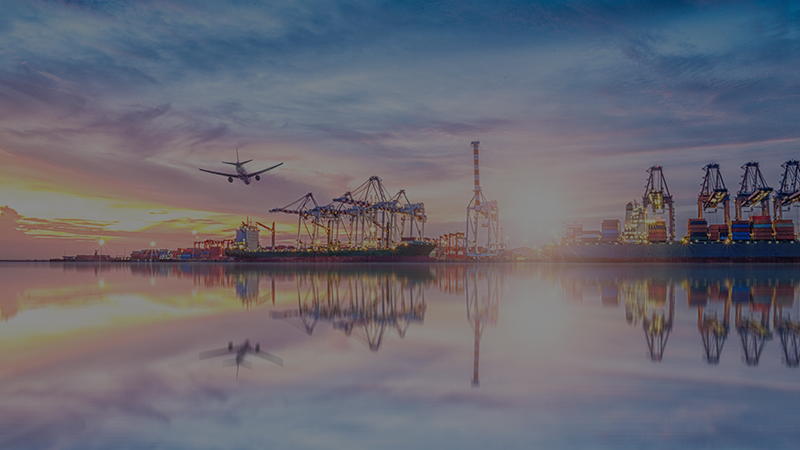Businesses participating in import and export trading may find themselves swirling in a storm of global regulatory changes. For those with small supply chains, keeping up with the changes may be nothing more than a manageable headache. But for those operating in a complex network of manufacturers, logistics partners, distributors, raw goods suppliers, and sales channels, remaining compliant carries tremendous burden and risk.
In a recent webcast, Virginia Thompson, Senior Product Manager at Thomson Reuters, and Jeff Rohe, Vice President and Product Manager at Infor, discussed the latest global regulatory changes that businesses need to know to mitigate international trade risk and remain compliant.
Let’s talk about forced labor in your supply chain
Forced labor has become one of the most talked-about topics in the global trade space today. Importers need to be aware of the regulations in the Uyghur Forced Labor Prevention Act, which was signed into law in December 2021. This will be enforced starting on June 21 2022, by US Customs and Border Protection.
The Act bans imports from the Xinjiang Uyghur Autonomous Region of China if those imports are made with forced labor. The problem is that the regulation impacts goods imported from anywhere if the inputs were made with forced labor that originally came from this region.
Importers are responsible for ensuring products they’re attempting to import were not made with forced labor at any point in the supply chain, amplifying the need for visibility throughout the supply chain. The U.S. Customs and Border Protection website provides the indicators of forced labor outlined by the International Labor Organization.
Some things businesses can do to ensure their supply chains are free of forced labor include standardizing how they interact with suppliers, prioritizing open communication, getting more involved in raw material procurement, and training employees on the regulations. While useful, these actions carry a heavy burden on supply chain staff, there’s an increased rate of error, and compliance costs as well as penalties for noncompliance are high.
Supply chain compliance software automates the burden of supplier due diligence with improved visibility, ensuring corporate responsibility for human rights and reducing the costs associated with compliance.
Effect of the Russia-Ukraine conflict on supply chain compliance
Since 2014, Russian sanctions after the annexation of Crimea have been complex, requiring organizations to establish an SOP (standard operating procedure) of tracking end-to-end supply chain participants. Business partners and customers must be verified against restricted party or embargoed countries lists. In addition, global businesses are required to safeguard against violating any export control regulations.
Despite the inherent complexity of complying with global trade regulations, the Russia-Ukraine conflict has exacerbated existing challenges of keeping up with ongoing change. Sanctions monitoring, ever-changing regulations and screening denied party lists provide long work days for supply chain professionals.
Businesses affected by the conflict are actively seeking opportunities to mitigate global trade risk, and Virginia’s advice is to focus on proactive due diligence and ensure organizations have good SOPs in place. Not only have a lot of changes occurred since the conflict, but many of those changes are also incredibly complex. Building out whole new screening processes may not be needed, but retraining on the current SOPs that are in place definitely is.
Jeff has seen increased interest in denied party screening automation, for enhanced due diligence of restricted persons, embargoed countries, and companies owned by these denied entities. The volume of data combined with ongoing change demands businesses integrate technology for confident management of trade activities.
Border regulations affecting supply chain compliance
The Customs and Border Protection (CBP) 21st Century Customs Framework (21CCF) is designed to ensure fair competition and increase transparency and accountability in the supply chain.
U.S. Import Entry Changes
1. Customs Modernization Act (“Mod Act”)
There have been many changes since the Customs Modernization Act (also known as the “Mod Act”) was passed in 1993, with the proliferation of eCommerce deemed one of the most significant. This has fundamentally changed how we transact across borders. The Customs and Border Protection (CBP) 21st Century Customs Framework (21CCF) is designed to ensure fair competition and increase transparency and accountability in the supply chain.
In addition to CBP’s work on the 21CCF, Senator Bill Cassidy’s draft Customs Modernization Act is a first step towards updating the regulations too. The Mod Act’s influence on eCommerce is an expansion of existing recordkeeping requirements. Online marketplaces would now become the party responsible for retaining information about imported goods for a period of five years.
2. Technology outpaces legislation
Another significant change has been in increasing technical capabilities, especially the use of Artificial Intelligence (AI) and Blockchain. These advances have exposed that the pace of technology has outpaced current laws and regulations.
Acknowledging the framework hasn’t kept pace, CBP has set up a task force to make refinements to the framework, with the help of the Commercial Customs Operations Advisory Committee (COAC). One of their main missions is to ensure the security of US borders through CBP commercial operations.
US Mexico-Canada Agreement
Of all the changes in the global trading regulations, the United States–Mexico–Canada Agreement (USMCA) has changed the least recently. However, the USMCA still has a few open issues, particularly regarding the automotive industry.
One noteworthy change is that the CBP has finalized the Automotive Certification Portal on their website. This new portal makes it easier for automotive companies to get guidance on their steel or aluminum Labor Value Content requirements.
In addition to existing origin requirements, this portal helps you check whether a passenger vehicle, light, or heavy truck is originating at least 70% of a vehicle producer’s purchases of steel and aluminum in USMCA territories.
Ensure supply chain compliance with World Customs Organization regulations
Changes to World Customs Organization (WCO) tariff schedule have been delayed this year, partly due to COVID. This means that many businesses are still scrambling to adapt to the necessary changes.
As the WCO was unable to publish its changes on schedule, it meant that many countries were unable to publish their own Harmonized System (HS) changes on time as well.
As such, there’s an elevated risk of inaccurate classifications, particularly in countries where the custom systems are less sophisticated. In the US, these changes came in late January 2022 which led to more complications for global traders and a greater chance of inaccurate classifications. Auditing those classifications has taken on an elevated importance.
By looking at your country’s process and when those changes were published, businesses can see what is necessary to reclassify products. This will help identify areas of risk of misclassification and audit them accordingly. Global classification software streamlines the audit process, accelerating the time to compliance, and with trusted accuracy.
Approach supply chain compliance with confidence
With regulatory changes impacting so many facets of global trade and the supply chains that support it, it is vital to have a robust compliance trade program to ensure transparency and open communication throughout the supply chain.
Businesses are turning to trade compliance software to support their import and export functions as well as seeking professional advice to help them future-proof their business, especially during periods of change and uncertainty.
World-class global trade management software and customs solutions keep global businesses compliant and up to date on forced labor regulations, sanctions monitoring, denied party screening, and many other requirements affecting the entire supply chain and trade management process.







